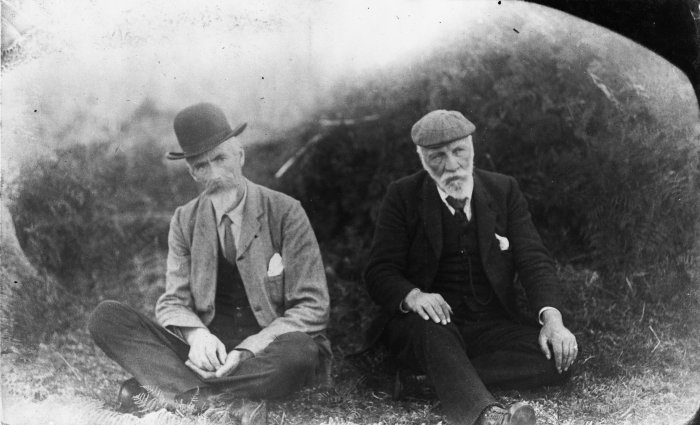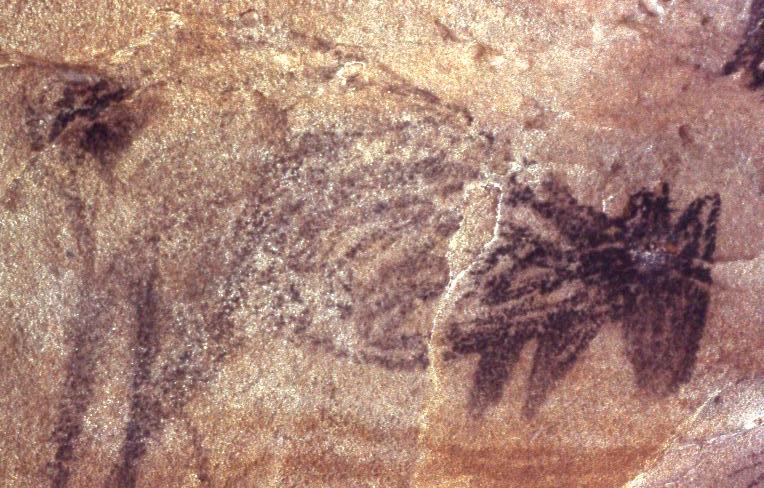|
Wardian Case
The Wardian case was an early type of terrarium, a sealed protective container for plants. It found great use in the 19th century in protecting foreign plants imported to Europe from overseas, the great majority of which had previously died from exposure during long sea journeys, frustrating the many scientific and amateur botanists of the time. The Wardian case was the direct forerunner of the modern terrarium and vivarium and the inspiration for the glass aquarium. It is named after Nathaniel Bagshaw Ward (1791–1868) of London, who promoted the case after experiments. He published a book titled ''On the Growth of Plants in Closely Glazed Cases'' in 1842. A Scottish botanist named A. A. Maconochie had created a similar terrarium almost a decade earlier, but his failure to publish meant that Ward received credit as the sole inventor. History and development Ward was a physician with a passion for botany. His personally collected herbarium amounted to 25,000 specimens. The fe ... [...More Info...] [...Related Items...] OR: [Wikipedia] [Google] [Baidu] |
Botanist
Botany, also called plant science, is the branch of natural science and biology studying plants, especially Plant anatomy, their anatomy, Plant taxonomy, taxonomy, and Plant ecology, ecology. A botanist or plant scientist is a scientist who specialises in this field. "Plant" and "botany" may be defined more narrowly to include only land plants and their study, which is also known as phytology. Phytologists or botanists (in the strict sense) study approximately 410,000 species of Embryophyte, land plants, including some 391,000 species of vascular plants (of which approximately 369,000 are flowering plants) and approximately 20,000 bryophytes. Botany originated as history of herbalism#Prehistory, prehistoric herbalism to identify and later cultivate plants that were edible, poisonous, and medicinal, making it one of the first endeavours of human investigation. Medieval physic gardens, often attached to Monastery, monasteries, contained plants possibly having medicinal benefit. ... [...More Info...] [...Related Items...] OR: [Wikipedia] [Google] [Baidu] |
Drawing Room
A drawing room is a room in a house where visitors may be entertained, and an alternative name for a living room. The name is derived from the 16th-century terms withdrawing room and withdrawing chamber, which remained in use through the 17th century, and made their first written appearance in 1642. In a large 16th- to early 18th-century English house, a withdrawing room was a room to which the owner of the house, his wife, or a distinguished guest who was occupying one of the main apartments in the house could "withdraw" for more privacy. It was often off the great chamber (or the great chamber's descendant, the state room) and usually led to a formal, or "state" bedroom. In modern houses, it may be used as a convenient name for a second or further reception room, but no particular function is associated with the name. History and development In 18th-century London, the royal morning receptions that the French called '' levées'' were called "drawing rooms", with the sense ... [...More Info...] [...Related Items...] OR: [Wikipedia] [Google] [Baidu] |
HMS Erebus (1826)
HMS ''Erebus'' was a constructed by the Royal Navy in Pembroke dockyard, Wales, in 1826. The vessel was the second in the Royal Navy named after Erebus, the personification of darkness in Greek mythology. The 372-ton ship was armed with two mortars – one and one – and 10 guns. The ship took part in the Ross expedition of 1839–1843, and was abandoned in 1848 during the third Franklin expedition. The sunken wreck was discovered by the Canadian Victoria Strait expedition in September 2014. Ross expedition After two years' service in the Mediterranean Sea, ''Erebus'' was refitted as an exploration vessel for Antarctic service, and on 21 November 1840 – captained by James Clark Ross – she departed from Van Diemen's Land (now Tasmania) for Antarctica in company with HMS ''Terror''. In January 1841, the crews of both ships landed on Victoria Land, and proceeded to name areas of the landscape after British politicians, scientists, and acquaintances. Mount Er ... [...More Info...] [...Related Items...] OR: [Wikipedia] [Google] [Baidu] |
Aotearoa
''Aotearoa'' () is the Māori name for New Zealand. The name was originally used by Māori in reference only to the North Island, with the whole country being referred to as ''Aotearoa me Te Waipounamu'' – where ''Te Ika-a-Māui'' means North Island, and ''Te Waipounamu'' means South Island. In the pre-European era, Māori did not have a collective name for the two islands. Several meanings for Aotearoa have been proposed; the most popular translation usually given is "land of the long white cloud", or variations thereof. This refers to the cloud formations which are believed to have helped early Polynesian navigators find the country in Māori oral tradition. Beginning in the late 20th century, ''Aotearoa'' has become widespread in the bilingual naming of national organisations and institutions. Since the 1990s, it has been customary for particular parties to sing the New Zealand national anthem, " God Defend New Zealand" (or "Aotearoa"), in both Māori and English, wh ... [...More Info...] [...Related Items...] OR: [Wikipedia] [Google] [Baidu] |
Joseph Dalton Hooker
Sir Joseph Dalton Hooker (30 June 1817 – 10 December 1911) was a British botanist and explorer in the 19th century. He was a founder of geographical botany and Charles Darwin's closest friend. For 20 years he served as director of the Royal Botanical Gardens, Kew, succeeding his father, William Jackson Hooker, and was awarded the highest honours of British science. Biography Early years Hooker was born in Halesworth, Suffolk, England. He was the second son of Maria Sarah Turner, eldest daughter of the banker Dawson Turner and sister-in-law of Francis Palgrave, and the famous botanist Sir William Jackson Hooker, Regius Professor of Botany, Glasgow, Regius Professor of Botany. From the age of seven, Hooker attended his father's lectures at the University of Glasgow, taking an early interest in plant geography, plant distribution and the voyages of explorers like Captain James Cook. He was educated at the High School of Glasgow, Glasgow High School and went on to study med ... [...More Info...] [...Related Items...] OR: [Wikipedia] [Google] [Baidu] |
Royal Botanic Gardens, Kew
Royal Botanic Gardens, Kew is a non-departmental public body in the United Kingdom sponsored by the Department for Environment, Food and Rural Affairs. An internationally important botanical research and education institution, it employs 1,100 staff. Its board of trustees is chaired by Dame Amelia Fawcett. The organisation manages botanic gardens at Kew in Richmond upon Thames in south-west London, and at Wakehurst, a National Trust property in Sussex which is home to the internationally important Millennium Seed Bank, whose scientists work with partner organisations in more than 95 countries. Kew, jointly with the Forestry Commission, founded Bedgebury National Pinetum in Kent in 1923, specialising in growing conifers. In 1994, the Castle Howard Arboretum Trust, which runs the Yorkshire Arboretum, was formed as a partnership between Kew and the Castle Howard Estate. In 2019, the organisation had 2,316,699 public visitors at Kew, and 312,813 at Wakehurst. Its site ... [...More Info...] [...Related Items...] OR: [Wikipedia] [Google] [Baidu] |
William Jackson Hooker
Sir William Jackson Hooker (6 July 178512 August 1865) was an English botany, botanist and botanical illustrator, who became the first director of Kew Gardens, Kew when in 1841 it was recommended to be placed under state ownership as a botanic garden. At Kew he founded the Kew Herbarium, Herbarium and enlarged the gardens and arboretum. Hooker was born and educated in Norwich. An inheritance gave him the means to travel and to devote himself to the study of natural history, particularly botany. He published his account of an expedition to Iceland in 1809, even though his notes and specimens were destroyed during his voyage home. He married Maria, the eldest daughter of the Norfolk banker Dawson Turner, in 1815, afterwards living in Halesworth for 11 years, where he established a herbarium that became renowned by botanists at the time. He held the post of Regius Professor of Botany at Glasgow University, where he worked with the botanist and lithographer Thomas Hopkirk and e ... [...More Info...] [...Related Items...] OR: [Wikipedia] [Google] [Baidu] |
Cape Horn
Cape Horn (, ) is the southernmost headland of the Tierra del Fuego archipelago of southern Chile, and is located on the small Hornos Island. Although not the most southerly point of South America (which is Águila Islet), Cape Horn marks the northern boundary of the Drake Passage and marks where the Atlantic and Pacific Oceans meet. Cape Horn was identified by mariners and first rounded in 1616 by the Dutchmen Willem Schouten and Jacob Le Maire, who named it after the city of Hoorn in the Netherlands. For decades, Cape Horn was a major milestone on the clipper route, by which sailing ships carried trade around the world. The waters around Cape Horn are particularly hazardous, owing to strong winds, large waves, strong currents and icebergs. The need for boats and ships to round Cape Horn was greatly reduced by the opening of the Panama Canal in August 1914. Sailing around Cape Horn is still widely regarded as one of the major challenges in yachting. Thus, a few recreational ... [...More Info...] [...Related Items...] OR: [Wikipedia] [Google] [Baidu] |
Sydney
Sydney is the capital city of the States and territories of Australia, state of New South Wales and the List of cities in Australia by population, most populous city in Australia. Located on Australia's east coast, the metropolis surrounds Sydney Harbour and extends about 80 km (50 mi) from the Pacific Ocean in the east to the Blue Mountains (New South Wales), Blue Mountains in the west, and about 80 km (50 mi) from Ku-ring-gai Chase National Park and the Hawkesbury River in the north and north-west, to the Royal National Park and Macarthur, New South Wales, Macarthur in the south and south-west. Greater Sydney consists of 658 suburbs, spread across 33 local government areas. Residents of the city are colloquially known as "Sydneysiders". The estimated population in June 2024 was 5,557,233, which is about 66% of the state's population. Estimated resident population, 30 June 2017. The city's nicknames include the Emerald City and the Harbour City. There is ev ... [...More Info...] [...Related Items...] OR: [Wikipedia] [Google] [Baidu] |
Condensation
Condensation is the change of the state of matter from the gas phase into the liquid phase, and is the reverse of vaporization. The word most often refers to the water cycle. It can also be defined as the change in the state of water vapor to liquid water when in contact with a liquid or solid surface or cloud condensation nuclei within the atmosphere. When the transition happens from the gaseous phase into the solid phase directly, the change is called deposition. Condensation is usually associated with water. Initiation Condensation is initiated by the formation of atomic/molecular clusters of that species within its gaseous volume—like rain drop or snow flake formation within clouds—or at the contact between such gaseous phase and a liquid or solid surface. In clouds, this can be catalyzed by water-nucleating proteins, produced by atmospheric microbes, which are capable of binding gaseous or liquid water molecules. Reversibility scenarios A few distinct rev ... [...More Info...] [...Related Items...] OR: [Wikipedia] [Google] [Baidu] |





